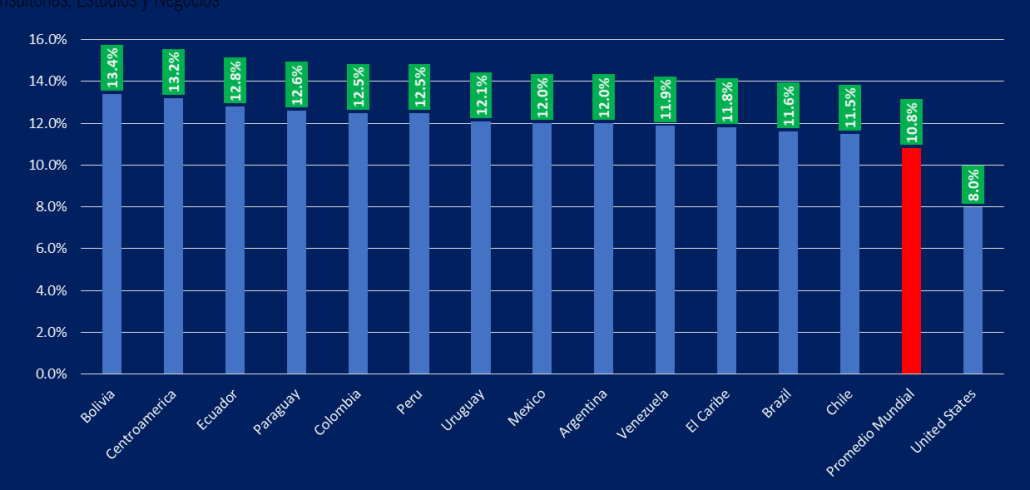Global Logistics and Its Impact on Latin America
Global Logistics and Its Impact on Latin America
Latin aftermarket distributors have not only had to professionalize themselves to maintain their leading role in the constantly changing printing market but have also had to establish themselves as efficient external and internal logistics companies at the same time.
Until a few years ago, global logistics had made significant progress, but the pandemic brought new challenges and challenges. This included the closure of companies, the increase in home deliveries, social distancing, and many other changes to consumption trends.
In addition, there were severe large-scale supply chain disruptions along with increased logistics costs worldwide, impacting product availability and end consumer prices.
As if all these factors had not been enough, the military confrontation between Russia and Ukraine added further unexpected consequences, such as an energy crisis and inflationary effects.
Logistics Performance Issues
One of the great problems in Latin America is the cost of logistics, which many estimate is 60% higher than in Asia. The lack of infrastructure is one of the main reasons for this.
A recent study by the World Bank highlighted the logistics performance of the countries of the region and linked it to their economic growth and competitiveness. In the graph, we can see how Latin America has been impacted by higher costs compared with the average being experienced by the rest of the world. According to this report, the countries in the region with the highest logistics costs are Bolivia, Central America, Ecuador, and Paraguay.

(Logistics cost as a percentage of GDP – 2021)
Inefficient logistics increase the cost of doing business and reduce the potential for integration with global value chains. This is because logistics are the backbone of world trade. The link between logistics, trade, and growth forms the basis for global completion.
This is the reason why Latin countries with a low logistics quality profile reflect a higher percentage of logistics costs in relation to GDP.
Perspectives for Latin and Global Logistics
Current forecasts are not very encouraging, stating that:
- as long as China’s lockdowns continue, sea routes will continue to be altered and delays and cost increases will continue.
- disruptions in the supply chain will continue, which is expected to normalize only by 2023.
- according to experts, the cost of shipping by sea and containers will continue to rise. It should be noted that maritime transport represents 82% of world transport.
- the political and military conflict in Ukraine and Russia puts pressure on the cost of oil and energy, which contribute significantly to the costs of the supply chain.
The impact of all these factors on the Latin American market continues to be relevant. They are aggravated, to a greater or lesser extent, by the local logistics performance that I mentioned earlier, altering the transfer of costs along the internal value chains of the countries, increasing the prices of products and reducing the competitiveness of national economies.
The great challenge for the region will be to modernize the infrastructure in each country and region to make supply chains more efficient.
For entrepreneurs in the print industry, uncertainty is a challenge that is already part of their new normal. It will be key in these times to invest resources to improve connectivity, technology, and tools for supply chain management, connecting demand with purchasing and transport activity.
All this will allow companies to be agile and move faster to face the coming times with better resources.
*This article was originally published in RT ImagingWorld magazine Issue 125. Click here to download a free digital version.
 Leave your comments on the article “Global Logistics and Its Impact on Latin America” below or join the conversation on LinkedIn.
Leave your comments on the article “Global Logistics and Its Impact on Latin America” below or join the conversation on LinkedIn.
Molinatti is RT’s global partner for Latin America. He is based in Buenos Aires, Argentina, and is the publisher of Guía del Reciclador—the Spanish language magazine first published in 2002 for the Latin American printer cartridge aftermarket. He has organized more the 20 technical and MPS training events in several countries and is helping RT bring VIP Expo events to Brazil, Argentina, and Perú. Please contact<info@guiadelreciclador.com>
Read RT ImagingWorld magazine in Spanish.
Read other articles by Molinatti:
- The Growth of Inkjet: New Normal or Temporary Bubble?
- Revealing the True Latino Pioneering Spirit
- Show Me the Color in Latin America
- Remanufacturing Remains Viable in Latin America
- Price Quality or Service – or all Three?
- Vertical Integration in the Latin Aftermarket: the Next Step?
- Adapting to New Normality or a Paradigm Shift?
- Can Latin America Manufacture its own NBCs—and be Profitable?
- HP Blocks Online Sale of Aftermarket Cartridges
- Remembering when Product Sales Increased
- Confronting Market Challenges and Opportunities











The author’s analysis of the challenges faced by Latin American aftermarket distributors and the impact of higher logistics costs on the region’s economic growth and competitiveness was particularly enlightening. The part about the need to modernize infrastructure to make supply chains more efficient really hit home. Thanks for the great read and for shedding light on this important issue. Keep up the good work!